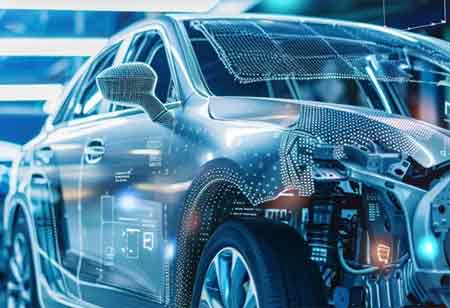Thank you for Subscribing to Auto Business Outlook Weekly Brief
Evolving Expectations: Consumer-Centric Trends in the Automotive Aftermarket
The automotive aftermarket is undergoing rapid evolution with digital innovations and the rise of electric vehicles, resulting in a more personalized and efficient experience for consumers.

By
Auto Business Outlook | Thursday, July 24, 2025
Stay ahead of the industry with exclusive feature stories on the top companies, expert insights and the latest news delivered straight to your inbox. Subscribe today.

Fremont, CA: The automotive aftermarket industry has undergone significant transformations over the past few years, driven by technological advancements, shifting consumer preferences, and the rise of e-commerce. This dynamic sector not only offers vehicle owners opportunities for customization and upgrades but also enhances efficiency and safety. Below are some of the most significant advancements shaping the automotive aftermarket today.
The Rise of Digital Technologies
One of the most profound changes in the automotive aftermarket is the integration of digital technologies. This shift spans various aspects of the industry, from e-commerce platforms to mobile apps that facilitate communication between consumers and service providers. Online marketplaces have expanded reach, allowing consumers to easily shop for parts and accessories from the comfort of their homes. Moreover, data analytics and artificial intelligence have revolutionized inventory management and customer service.
Companies can now analyze consumer behavior to forecast demand, ensuring that popular products are readily available. This level of insight enables businesses to tailor their offerings to meet specific customer needs, enhancing the overall shopping experience. Mobile applications are also playing a crucial role in streamlining services. Many automotive service providers have developed apps that enable customers to schedule maintenance, track service history, and even receive reminders for upcoming vehicle check-ups. This not only improves customer convenience but also fosters loyalty in a competitive market.
The Shift Towards Electric and Hybrid Vehicles
As the automotive industry increasingly embraces electric and hybrid vehicles, the aftermarket is rapidly adapting to meet new demands. This paradigm shift is driven by growing environmental awareness and government regulations aimed at reducing carbon emissions. As a result, traditional aftermarket practices are evolving to accommodate the unique needs of electric and hybrid vehicles. In the electric vehicle (EV) segment, there is a notable increase in the demand for specialized parts, such as batteries and electric drivetrains.
Companies are now focusing on developing maintenance services specifically for EVs, including battery health assessments and software updates. Training programs for technicians have also emerged, ensuring they are equipped with the necessary skills to service these advanced vehicles. Furthermore, the rise of hybrid technologies has spurred innovations in vehicle customization, enabling consumers to tailor their vehicles for enhanced efficiency and performance. This, in turn, is creating new revenue streams for aftermarket companies that cater to this niche market.
Enhanced Customer Experience through Personalization
Personalization is becoming a key trend in the automotive aftermarket, as consumers increasingly seek tailored products and services. This demand for customization is driven by the desire for individuality and the need for vehicles that cater to specific lifestyles or preferences. Aftermarket retailers and service providers are responding by offering customizable options for parts and accessories, ranging from performance upgrades to aesthetic modifications. Online configurators allow consumers to visualize how certain upgrades will look and perform, facilitating informed purchasing decisions.
Additionally, loyalty programs are evolving to offer more personalized rewards tailored to customer preferences and purchasing behavior. By collecting and analyzing customer data, businesses can tailor their marketing efforts to ensure that promotions and offers resonate with their target audience. Moreover, the use of virtual reality and augmented reality technologies is gaining traction in showrooms, allowing customers to virtually explore their customization options before making a purchase. This innovative approach not only enhances the shopping experience but also helps build stronger connections between consumers and brands.






